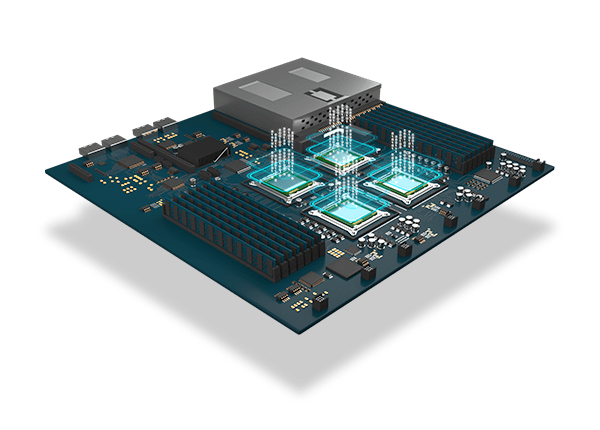What Makes an Industry Standard PCB Design Software?
Key Takeaways
-
Industry-standard PCB software includes a wide range of tools, from basic schematic capture to advanced routing and DFM checks, catering to all stages of PCB design.
-
OrCAD X seamlessly integrates with other tools, supporting MCAD-ECAD collaboration and export capabilities for complete device development.
-
Backed by Cadence, OrCAD X offers dependable performance, regular updates, and comprehensive customer support.

When discussing what makes an industry standard PCB software, a few factors come to mind. Firstly, industry standard requires wide industry adoption, meaning that professionals who learn and become proficient with such tools are better positioned to fit into various roles within the industry, as they can work seamlessly with teams and systems already in place. Read on as we discuss what makes an industry standard PCB design software, and how OrCAD X shines as one.
What Makes an Industry Standard PCB Design Software?
|
Factor |
Description |
|
Widespread Adoption |
The software is used by a large and diverse group of users across the industry, demonstrating its acceptance. |
|
Robust Features and Capabilities |
Includes comprehensive functionalities that meet both basic and advanced needs of the industry. |
|
Reliability and Support |
Offers dependable performance with strong customer support, regular updates, and security patches. |
|
Compatibility and Integration |
Easily integrates with other tools and systems commonly used in the industry, enhancing workflow efficiency. |
|
Community and Ecosystem |
Supported by a large community of users and developers, along with a rich ecosystem of plugins and extensions. |
|
Regulatory Compliance |
Helps users comply with industry-specific regulations, adding to its indispensability and trustworthiness. |
|
Bonus: Ease of Use |
Measured by the number of clicks, keystrokes, and mouse movements required to complete a task, focusing on user-friendly interface and streamlined workflow. |
Why Choose Standard PCB Design Software
In addition to the broad industry adoption, industry standard pcb design software must offer export capabilities —obviously for creating high-quality circuit boards, but also for other aspects of the device if needed as they integrate with the electronics. These software tools should integrate smoothly into a larger suite of development tools used for creating devices. This integration is crucial for projects where different aspects of design—such as electrical, mechanical, and software components—must come together seamlessly. Examples include drill files for accurate hole placement, 3D CAD formats for mechanical enclosure integration, and BOM (Bill of Materials) files for efficient component sourcing and assembly.
Ensuring Reliability in PCB Design
When working on large-scale projects in the industry, reliability is paramount, and this begins with rigorous DRC (Design Rule Checking) and DFM (Design for Manufacturability) checks. These checks are essential for ensuring that your PCB designs adhere to necessary specifications and are manufacturable without issues. Reliable outputs are crucial, as they ensure that the files you send to manufacturers—whether Gerber files, drill files, or component placement files—are accurate and compatible with industry standards.
This level of reliability is typically associated with industry-standard PCB design software, which offers comprehensive tools and features that barebones software simply cannot match. For large projects, where the cost of errors can be substantial, using a robust, industry-standard tool is a necessity to guarantee that your designs are error-free and ready for production.
How OrCAD X Meets Industry-Standard Criteria
|
Factor |
OrCAD X Features |
|
Widespread Adoption |
OrCAD X is widely adopted across various industries, from consumer electronics to automotive and aerospace, with support for HDI, , and high-speed designs . |
|
Robust Features |
Beyond the aforementioned capabilities, OrCAD X offers advanced constraint-driven routing, 3D visualization, DFM checks and more, making it suitable for a variety of industry-required designs . |
|
Reliability and Support |
Cadence OrCAD X is backed by robust support, regular updates, and extensive documentation. This ensures reliable performance and user assistance throughout the design process . |
|
Compatibility and Integration |
OrCAD X integrates seamlessly with other CAD tools, supportsMCAD-ECAD collaboration, and allows for the export of 3D design data for comprehensive device development . |
|
Community and Ecosystem |
OrCAD X has a strong community and ecosystem, with access to forums, online resources, and a wide range of extensions and plugins to enhance its capabilities . |
|
Regulatory Compliance |
OrCAD X includes DFM checks for compliance with manufacturing standards and helps ensure designs meet industry regulations for safety and performance . |
|
Ease of Use |
The new OrCAD X isdesigned with a user-friendly interface, reducing learning curves and improving efficiency in task completion. |
When selecting industry standard PCB design software, it's crucial to choose a tool that not only meets the essential criteria but also enhances your design process. Cadence offers a comprehensive suite of tools, with OrCAD X at the forefront, to help designers tackle complex PCB projects with confidence. To learn more about how Cadence can support your PCB design needs, explore our PCB Design and Analysis Software and discover the new OrCAD X platform.
Leading electronics providers rely on Cadence products to optimize power, space, and energy needs for a wide variety of market applications. To learn more about our innovative solutions, talk to our team of experts or subscribe to our YouTube channel.